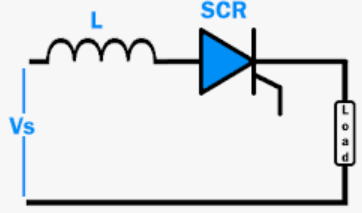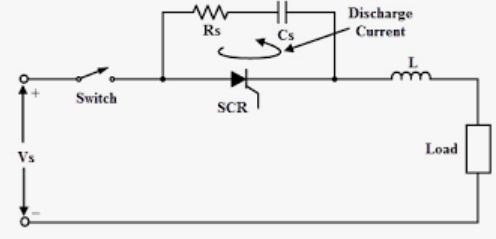- Home/
- CDS & Defence/
- Article
dv/dt protection is provided to the SCR by –
By BYJU'S Exam Prep
Updated on: September 25th, 2023
- Connecting a capacitor & resistor in parallel with the device
- Connecting a capacitor in parallel with the load
- Connecting an inductor in series with the load
- Connecting an inductor & resister in parallel with the device
dv/dt protection is provided to the SCR by connecting a capacitor & resistor in parallel with the device. As soon as the gate signal is applied, the SCR is ON and the anode current begins to flow through it. To propagate throughout the connections of SCR, this anode current needs a certain amount of finite time.
dv/dt Protection
A non-uniform distribution of current in the junction occurs when the anode current rise rate (di/dt) is large. This further results in the formation of regional hot spots close to the gate-cathode junction because of the high current density. Because of the warming effect, the SCR can be harmed. As a result, the di/dt has to be maintained below the predetermined limits when the SCR is turned on. A thyristor and an inductor are connected in series to reduce the fast rate of current change.

Junctions J and J are forward biassed and junction J is reverse biassed when the SCR is forward biassed. The reverse-biased junction J displays capacitor-like properties. The pace at which a forward voltage is supplied across the SCR determines how much charging current flows through junction J. Even in the absence of a gate signal, this current is sufficient to activate the SCR. This is referred to as dv/dt SCR triggering. Utilizing the RC snubber network across the SCR can lessen this.

Summary:
dv/dt protection is provided to the SCR by – (a) Connecting a capacitor & resistor in parallel with the device (b) Connecting a capacitor in parallel with the load (c) Connecting an inductor in series with the load (d) Connecting an inductor & resister in parallel with the device
The SCR is protected from dv/dt by having a capacitor and resistor connected in parallel to it. Silicon Controlled Rectifier (SCR) is a unidirectional semiconductor device that is made of silicon. It is the solid-state equivalent of thyratron and is therefore called a thyristor or thyroid transistor.
